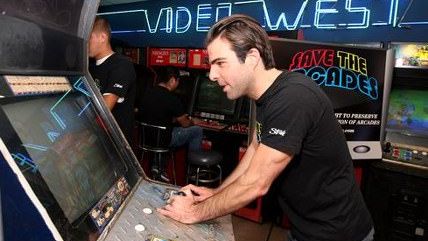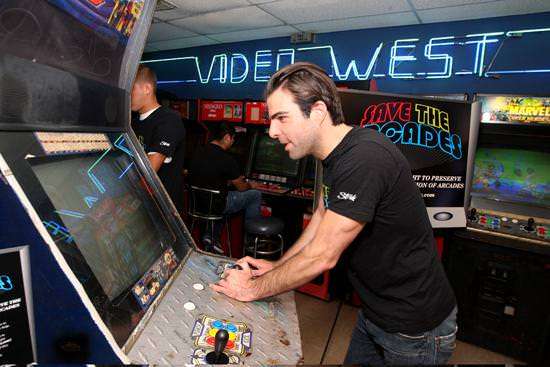The Neon Jungle Favors a Museum over an Arcade
Redevelopment is not a game in Glendale


The city of Glendale, Calif., paid $1 million to purchase an arcade in 2010. Let's just start with that. They wanted the property, not the machines, as part of a redevelopment plan, but eventually the owner just gave them everything for $1 million. The way the Glendale News-Press recently described the sale, it sounds like the owner threw in the towel under pressure:
The former owner, Andranik Shahinian, initially didn't want to sell the building to the city, preferring to close the arcade and bring in a retail chain, but those plans never came to fruition. There were talks of eminent domain and actor Zachary Quinto, known for portraying Spock in "Star Trek" movies in 2009 and 2013, hosted a Save the Arcade event there in 2009.
In the end, however, Shahinian handed over the keys.
Glendale had its own plans for the space. It has pulled in the Museum of Neon Art from a temporary location in downtown Los Angeles to a permanent home in that spot (and two other nearby properties), to anchor the city's plan for a cultural arts district.
But then Gov. Jerry Brown killed off the notoriously corrupt redevelopment agencies (RDAs) in cities across the state in order the try to bring the tax revenues redirected to the agencies back into the school systems and other special districts. It left the assets cities bought with redevelopment agencies frozen, and cities would eventually be required to sell them off and send the money back to Sacramento.
So Glendale was left with 50 old arcade machines in storage while the building was renovated for this museum (the deal for the property having been completed before Brown's actions). This week Glendale was told that the arcade machines could be sold, and they're planning to dump them. After paying $1 million of taxpayer funds for the property, they're hoping to get about $100,000 for the games.
That sounds about right, though they might get a bit more for a few machines if they're rare enough. There is a culture of Gen. X-aged arcade nostalgia enthusiasts who buy old machines, refurbish them, and make their own home arcades in dens or basements (I would probably be one of them if I had the money, a den, or a basement).
In the meantime, three years after the purchase, the Museum of Neon Art is still trying to raise money to finish the renovations to move into the space. Their site indicates they need $1.5 million to complete the interior and notes that this is after the city gave them money to finish the building's exterior. So the city paid to buy the building and paid again to renovate the exterior. The city wants this museum to anchor its art district, but the museum is still struggling to get donors, still looking for more than $1 million to finish its internal renovation and open the museum by the end of the year.
I called the museum just to verify they were still needing donations and ended up having an interesting conversation with Kim Koga, the museum's executive director, who explained that the death of RDAs added delays to the fundraising. She had plenty of praise with Glendale's redevelopment agency, which she credits for saving the museum after the Los Angeles Community Redevelopment Agency (CRA) was unable to continue helping them stay in the downtown area. She explained that as downtown Los Angeles revived, the museum didn't fit the developer's plans anymore.
It's an interesting observation about the way RDAs can end up working out. At one point, the CRA thought the museum was a great addition to downtown Los Angeles, but as circumstances changed they found themselves pushed out. Now Glendale thinks the museum would be a great addition to their city, and they were willing push others out to bring the museum there. So what happens down the line if the museum doesn't take off the way Glendale hopes? Will they be pushed out for something else?
Former Reason Editor Tim Cavanaugh railed against the corruption of the CRA and redevelopment agencies in general back in 2011 and 2012. But even absent corruption or crony capitalism, the involvement of government in making development decisions creates the possibility of property owners being forced out because officials have a different idea of what their city should look like. It creates an unstable environment where nobody's ownership of property feels safe.
Also, as an aside, doesn't it feel weird that Shahinian would have to give up his arcade for a neon museum? Talk about two great tastes that go great together. Maybe the museum should try and snag those machines and incorporate them in as a way to earn some extra change. At the very least, they should approach whoever buys the machines to see if they're interested in donating to the museum.
Show Comments (5)